Estonia revisited in 2014
By Reinhard Wilhelm
Available as PDF *HERE*
10 years ago we rode our bicycles 1000km across the three Baltic countries, see Tallinn (Estonia) to Klaipeda (Lithuania). At that time, we were considered exotic animals, as there were very few bike tourists in the Baltic countries. Actually, when explaining that we were about to cross these countries on bicycles we met a lot of horror, "Don’t do that It is dangerous." A friendly colleague offered to save us wherever we would find ourselves in trouble. I had met him quite often during the last 25 years, starting during Soviet times, and have discussed the development of Estonia during this historic period. Now in 2014, 10 years later, we went back to Estonia to enjoy the protection by Putin’s missiles. This time we traveled over the Estonian islands, and we were not alone any more. Bicycle tourism has become popular in the Baltics, not quite as popular as in Holland or Germany. But you meet quite a few Finns, Germans, Austrians, Italians and other, mainly western Europeans.
We took advantage of having this good old friend and colleague. We would exchange emails every day, I reporting on our adventures and observations, he explaining the reasons for our observations or challenging my conclusions drawn from them.
Bike routes and dirt roads
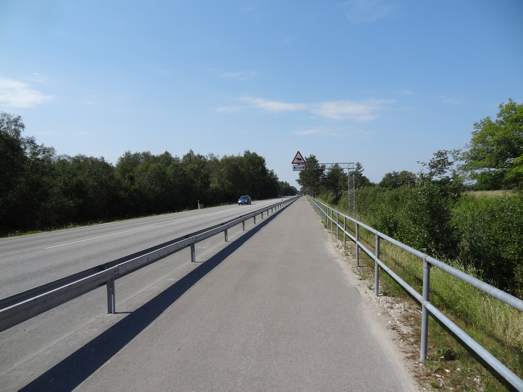
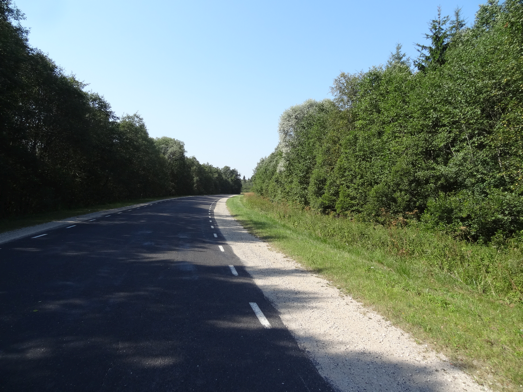
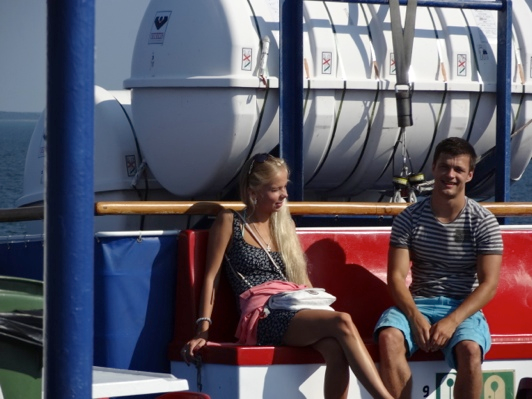
The concept of a bike path was virtually unknown in the Baltics 10 years ago. This has changed a lot. There is the Eurovelo 10 bike route, which passes along the coast of the Baltic countries and even through some of the Estonian islands, which we wanted to visit. It sometimes is a well-paved bike lane, separated from a major highway. You can then safely pedal without fearing for your life. On the other hand, this is not the contemplative way of biking. The contemplative you find way on small roads with little traffic in the countryside.
Sometimes the Eurovelo 10 exists in the form of a lane "protected" by a dashed line. The width of this lane often matches the width of your tire, well, as long as your tire is not too wide. Your feeling of being safe is limited in this case. One thing that did not change too much in the past years is the way people drive in Estonia. Only the cars nowadays are different from the cars we met 10 years ago. At that time, a major share of the German used-care market had found its way onto the roads of the Baltic countries. Nowadays, you see a high share of SUVs or even Jeeps and Humvees, all in black. We got an explanation for this phenomenon from an Estonian, driving a big black Mercedes: Estonian men feel that in order to get the great women, of which there are quite a few, you need to own a black SUV. So, this is a macho problem Our friend said that he pictures the faces of all these SUV-driving machos once they will have to understand the influence of the 100%-dependence on Russian oil on the gas prices. Estonian drivers don’t know the concept of a minimal distance that a cyclist needs. Also, a motto like “I brake for a cyclist” would appear utterly absurd to most of them. On the other hand, when a 15-ton truck overtakes you in 50cm distance it gives you an incredible speedup.
Coexistence
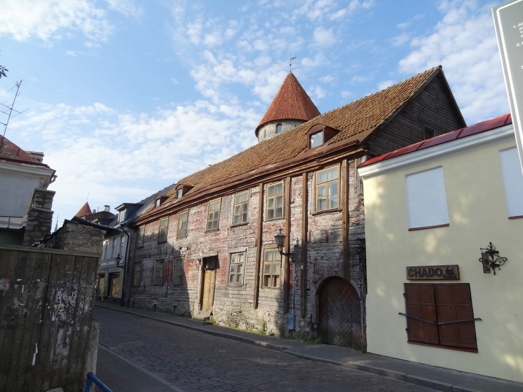
The development of Estonia in the last 10 years has been amazing. Old buildings have been beautifully renovated and many shiny new buildings have been
built. But one still sees run-down buildings from the time of real socialism. This coexistence, sometimes side by side, is always staggering. Our friend said:
Well, capitalism has not come to all Estonians through the same door.
Our accommodations
The accommodations were booked in advance by an organization in Tallinn. The touristic infrastructure is still not very developed, in particular in the countryside. Therefore, the accommodations varied a lot in quality and pretense. We had noble renovated mansions and simple holiday camps without water toilets and with collective showers.
The organization was perfect. We had some superfluous luggage in 2 suitcases, which were transported from hotel to hotel along our route. Several day trips involved ferries. In this case we selected a ferry, last night’s hotel brought the suitcases to this ferry, and next day’s hotel picked it up. One wouldn’t worry if the suitcases were standing on the ferry, in the ferry stations, or outside for a while. Nobody would expect that something would be stolen.
Our trip
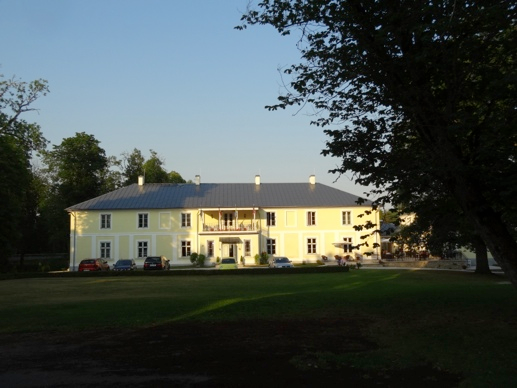
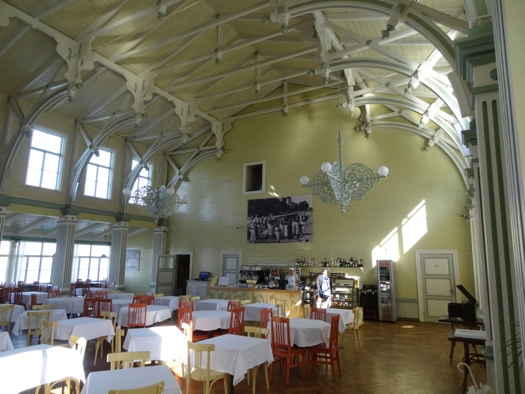
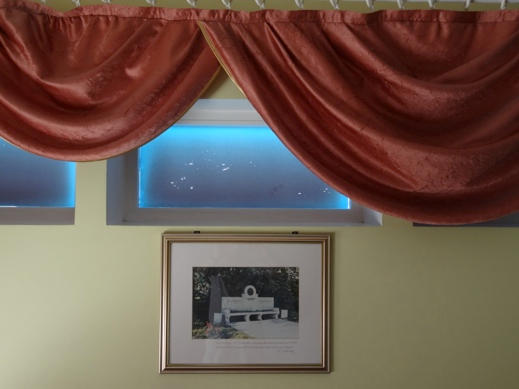
We started our trip in Tallinn and after an exhaustive search at the outskirts found the entry to Eurovelo 10. We followed it until the steep coast at Türisalu and then went inwards in the direction of Keila-Joa to avoid heavily populated highways without bike path. Our first leg ended at Padise.
The former mansion of a Swedish family in Padise has been reacquired by two cousins of this family and is now run as a fine hotel and restaurant. This hotel was definitely somewhat nobler than expected by bicycle tourists. Our friend said that the Estonians are extremely happy about all these Germans and Swedes buying back the property of their forefathers.
The next days brought us to Haapsalu, a traditional sea spa and historic seat of the bishop of Ösel-Wieck. The ruins of this bishop seat, whose construction started in the 13 th century, are impressive. The fortified seat once extended over 4ha.
Another building of more recent times is the Kursaal, a beautiful art-nouveau building. We had the best cake of our whole trip in the Kursaal, a cake in the best German tradition. Our friend said cake recipes were among the best parts of the German heritage in Estonia. While we were enjoying our cake, we observed a friendly, very pretty young lady together with a young man emptying a bottle of wine, note, at the time for coffee and cake!
A while later we had an early dinner in the famous Hapsal Dietrich, at the neighboring table our young lady behind a large glass of beer in the company of two macho-type men. As I had a digestive rest on a bench at the beach, who passed by accompanied by yet another man? Well, our friendly young lady. Our friend assumed that she might have been of the too friendly type. Our accommodation in Haapsalu, the Päeva Villa, raised the question whether “villa” meant the same in Estonian as in English and German. Our friend said, in principle, yes.
We were too early to move into the Soviet Room, which had been assigned to us. This room, stuffed with plastic furniture and household appliances of the soviet times, had not been cleared of the previous guests’ vodka orgy. Batteries of vodka bottles stood on the table. I later wondered whether these bottles were an integral part of the room decoration. Our friend said that most likely this part of the decoration was renewed every day.
We were instead moved to the Tchaikovsky room. Tchaikovsky has actually cured in Haapsalu. If he has been staying in this room it could indicate one reason for his assumed suicide.
The warm-hearted host
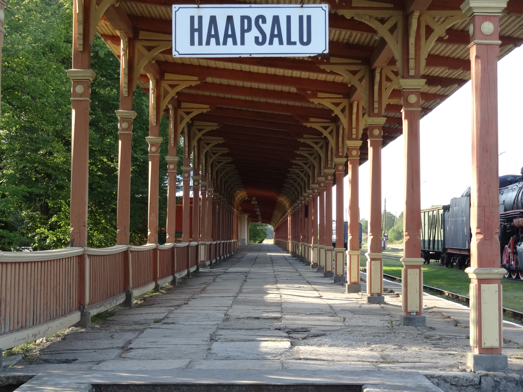
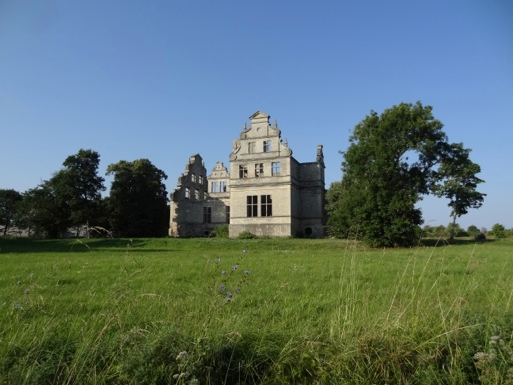
The next day brought us to Kärdla on Hiiumaa Island. We passed by the beautifully restored train station of Haapsalu, which now hosts a train museum with many old steam engines and cars, admired Haus Linden, a never completed copy of Schloss Merseburg, and then took the ferry to Hiiumaa.
The leg ended in Kärdla, a small town with no spectacular things to see. A revitalized wool factory produces beautiful, though somewhat scratchy pullovers, gloves, socks and such. Our friend believed that they lacked the accomplishments of modern chemistry to make their products smooth. We stayed in a nice, modest guesthouse. Nobody was there when we arrived. But we knew that the terrace door was left unlocked. We entered, searched for an unoccupied room, found one, occupied it, took a shower, and felt at home. This feeling increased when our host appeared. Such a warm-hearted lady She gave us a few instructions, recommended to have dinner at the riding stable--a very good recommendation--and, next morning, prepared a wonderful breakfast. When we later mentioned to the tour organizer that we liked this guesthouse most she said that all her clients did so. It shows that feeling truly welcome beats luxury.
The touristic farm
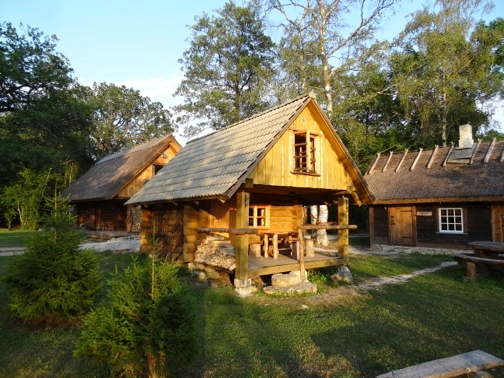
We left the island Hiiumaa by ferry from Söru to Triigi, a port on Saaremaa, the largest of the Estonian islands. Our first station on Saaremaa was a touristic farm near Leisi. The farm had been nicely converted and extended into a group of small wooden houses with all the facilities and the comfort one could dream of. The farmer’s wife prepared a very nice dinner consisting of several courses including plaice as main course. Dinner and also breakfast the next morning was served outside in a covered open place. Our friend explained later why we didn’t have to worry about mosquitos, “Just too hot for them this year.” Instead of the usual plague of mosquitos they had an oversupply of wasps as a consequence of the hot weather. Fortunately, they were not aggressive at all.
Kuressaare
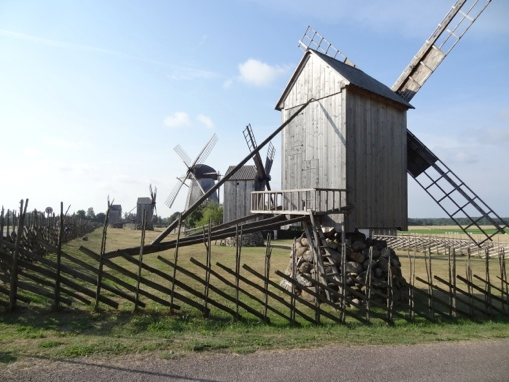
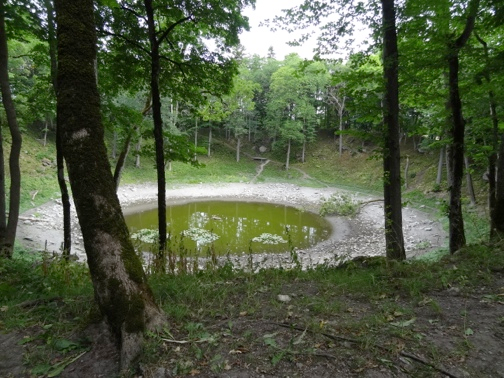
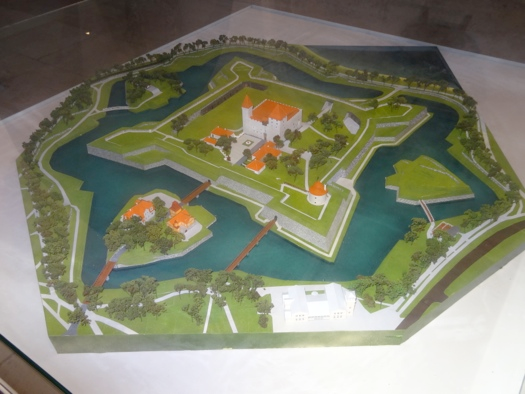
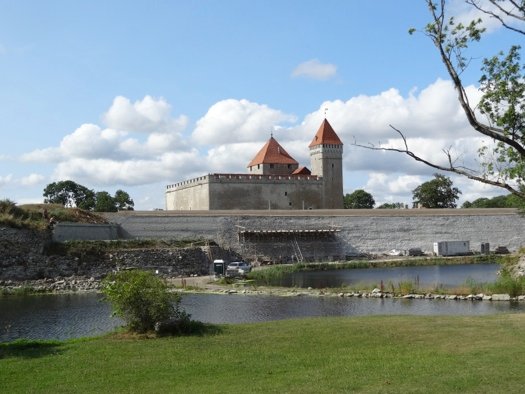
On the route from Leisi to Kuressaare we passed several fascinating sights. The first were the windmills at Angla. The traditional Estonian windmills are block windmills. They rest on one big pole and can be turned into the wind by pushing an external lever. The ensemble at Angla also had one of Dutch design. It was interesting for us to see that Estonia, despite its ample supply of wind, does not have too many modern windmills, i.e. wind-power plants.
Even more fascinating was the crater left by a meteorite in Kaali. The meteorite hit the ground roughly 7500 years ago. It burst into pieces 5 – 7 km above ground. The biggest piece created this crater, which is 22m deep and 110m wide. The other, smaller craters have disappeared.
There is quite a bit of touristic infrastructure around the crater, souvenir shops, a meteorite museum, and a restaurant. I could not resist the offer of a locally brewed beer, and I liked it. We have found small local breweries in many places. I only remember that they tasted interesting, but can’t describe the taste. However, I also remember that the price was always at least twice the price of the standard beers. The waiters in the restaurants explained us that these beers were extremely precious and rare, and that they praised themselves as being lucky that they were considered worthy of receiving a certain amount of this valuable produce. Kuressaare, formerly Ahrensburg, is the capital of the district of Saaremaa. It was for a long time a seat of the bishop of Ösel-Wieck. The heavily fortified castle is well preserved and still impressive. The museum has room with plates for each of the bishops giving his name and the most important facts about his life and time of duty. Several of them had quite interesting lives, and even more interesting deaths One thing to learn was how much it had cost at the time to become bishop of Ösel-Wieck. Roughly one third of an annual income had to be paid to the curia in Rome. Several such payments are documented. They show that bishops were earning quite nice salaries in those times. My friend said that they definitely exceeded what he could ever earn. Our hotel at the newly built athletics stadium was new, clean, had a view onto the castle, but was otherwise without much atmosphere. At our dinner in a fine restaurant I had another locally brewed beer at the cost of a good Bordeaux.
A remark as to the Internet connections is in order. Estonia praises itself as a nation devoted to the Internet. Almost all hotels had excellent, free, albeit unprotected Wi-Fi’s. Only the holiday resort in Kastna had no Wi-Fi, and the very nice lady running the resort asked for excuse and offered a surf stick, which unfortunately did not fit into my iPad. The Wi-Fi in our Kuressaare hotel was not really stable. Once I located the repeater, I had to reset it several times.
The winemaker
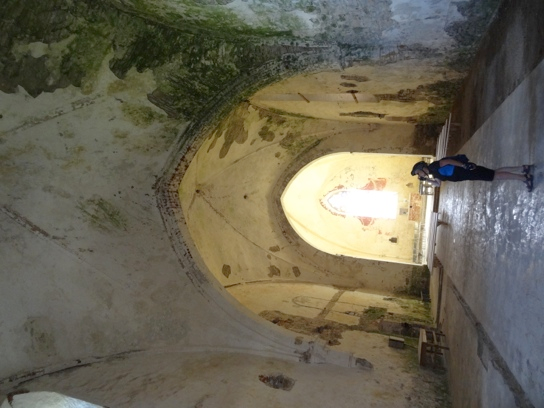
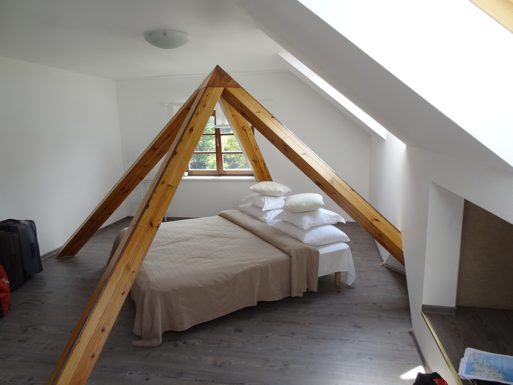
On the way from Kuressaare to Vahtraste we visited the church of St. Mary in Pöide, whose origins are in the 14 th century. It is huge and very badly kept. We left the island Saaremaa on a dam to the former island Muhu.
Luxury and exquisite design, without much consideration as to practicality, was what the wine farm-- or was it the farm winery?--in Vahtraste on Muhu attempted to offer. Located in the middle of nowhere, reached on 6km of dusty dirt road through quite a number dust clouds raised by cars, it looks being dropped into the wrong place. The 6km dirt road were even more detrimental on our mood as they came at the end of the longest daily route, 84km.
One of the two alternative names suggests what the husband of the owner actually does, namely importing wine, the other what he plans to do, namely producing wine. I guess, that the first is easier than the second. We were invited to the winemaker’s table for a quite nice and pretty expensive 5-course dinner, in the course of which we had to jointly excavate a lamb that had been roasted under ground during the day. We could not escape this “tradition”, which given the age of the place has been maintained for at least 4 months. I must confess, its taste was delicious. However, it would have been delicious even without us participating in the excavation.
At dinner we expressed our skepticism about the chance for an Estonian grape wine. However, the winemaker insisted on his dream. Our friend said, people claiming to produce wine in Estonia are either stupid or run a PR hoax.
Back to the mainland
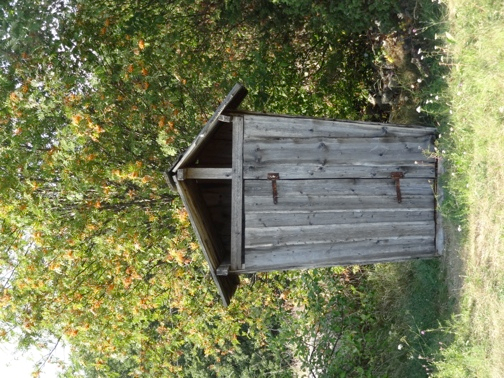
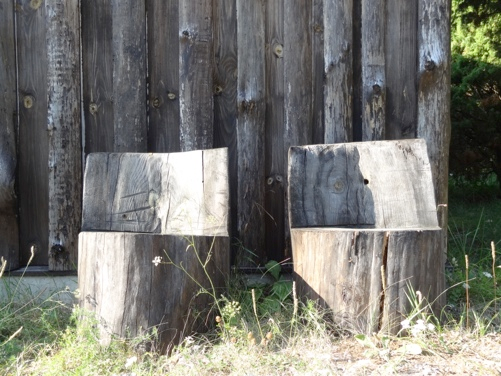
From Muhu we went back to the Estonian mainland towards Pärnu on wonderful country roads and through nature reservations, like the one around Puhtu-Laelatu. A huge variety of trees and other plants can be admired there. Unfortunately, we were too late to find the many different kinds of orchids.
There was not much traffic. We saw beautiful, not very populated beaches. We had picnic at the Illuste mansion, formerly owned by the von-Maydell family and now used by a Tallinn sports club for youth summer camps. We could not escape the observation that the German actress Sabine von Maydell, member of this family, is much better preserved than the former family mansion.
Another dirt road brought us to our accommodation, a holiday resort in Kastna. This resort was occupied by a group of realtors for the weekend, celebrating from Friday night until early Saturday morning. The friendly lady running the resort brought us to an accommodation in a nice, remote cabin, somewhat protected from the realtors. It had a privy at a 50m and collective showers in 150m distance. Beautiful songs of a completely green bird of unknown species accompanied any business. Pre-IKEA furniture invited to meditation and reading, not for too long, though.
End of the trip in Pärnu
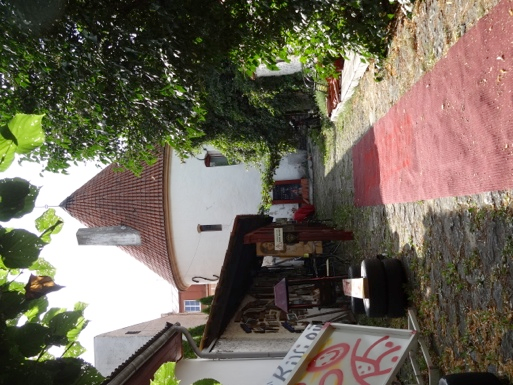
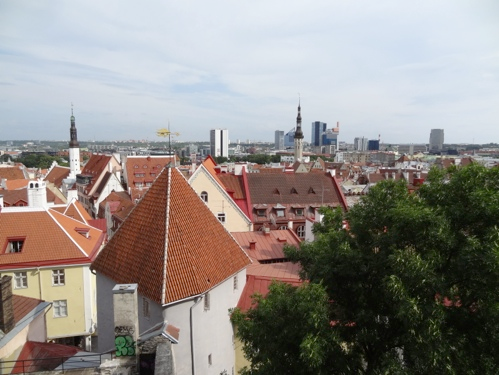
Our trip ended in Pärnu, another traditional sea spa with a number of well-maintained historic houses, e.g. the red tower, part of the former city fortification. Our way to the hotel was endlessly blocked by a turning bridge, operated by a man who had opened it to let a boat in and then always succeeded in almost getting its parts back to fit together. Our friend assumed that this was good old Soviet technology. Pärnu has another instance of a Kursaal, this time we did not enjoy its very greasy food.
Back in Tallinn
From Pärnu we took one of the comfortable buses back to Tallinn, where we spent an extra day doing sightseeing. Tallinn as a world cultural heritage attracts masses of international tourists from all over the world. Facing them all over the place, I almost developed nostalgic feelings towards the good old Soviet times, when there were very few tourists and the 6-page menu had prices given for only 3 meals, of which one was actually available. Our friend sabotaged these feelings by reminding me of our desperate attempts to get into several restaurants for our goodbye lunch. All were claimed to be completely full or awaiting busloads of tourists. Needless to say that none of them was full, nor did the busloads of tourists materialize.
Summary
We really enjoyed this bike trip of roughly 500km length. The landscapes, the beaches, the towns and mansions, and last but not least the people were enjoyable. The organization was perfect, the leased bicycles in good condition; one broken spoke was easily replaced in a local bike shop without much ado and at very reasonable cost. The weather was on the hot side in the beginning—our friend said that that this year they had made an exchange deal with the Italians—and rain started only when we were back in Tallinn.
Let’s hope that Putin is content with having conquered the wine-growing areas on the Crimea, so that he doesn’t aspire to conquer the Estonian wine area at Vahtraste.



